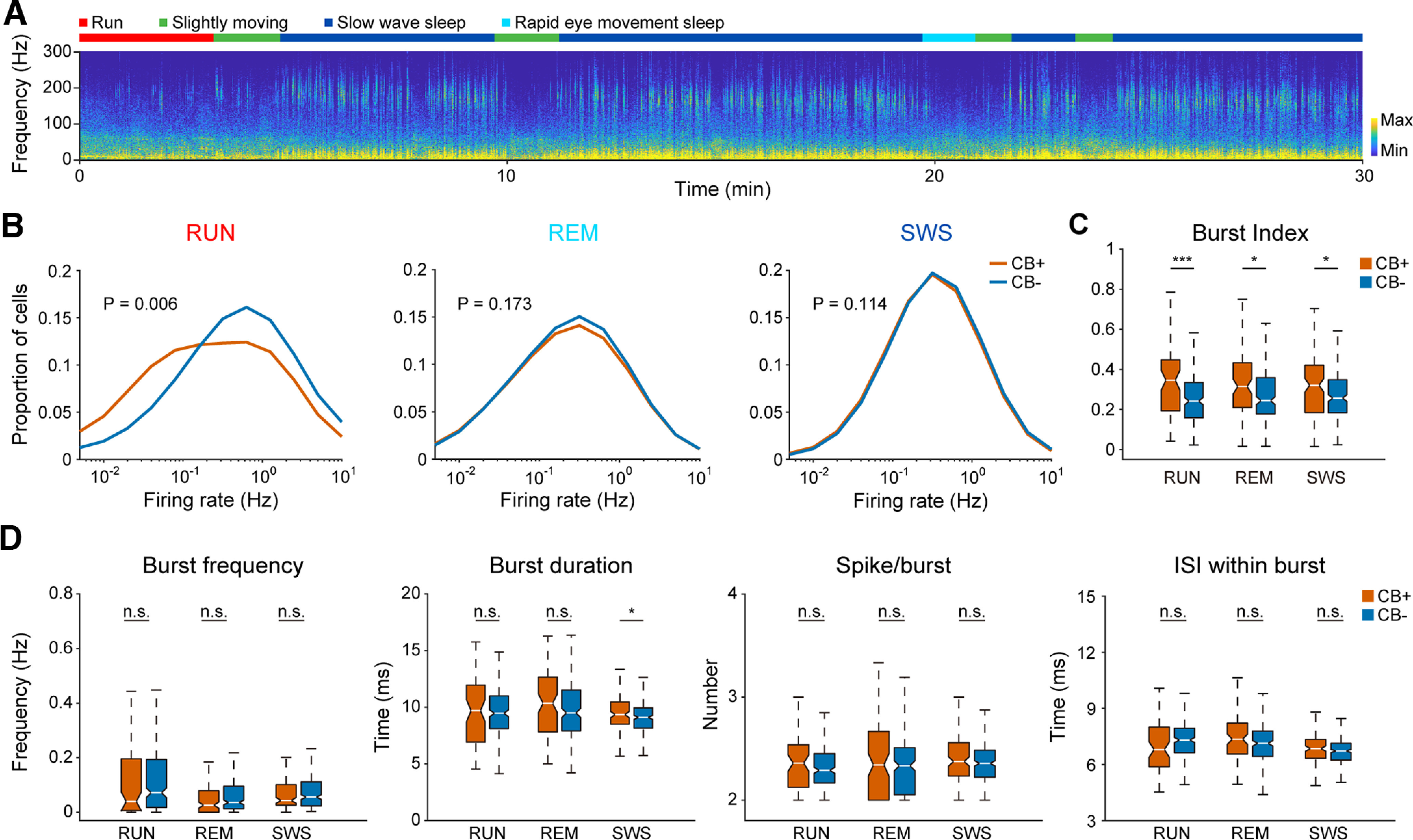Figure 2.

In vivo identification and basic firing pattern of hippocampal pyramidal neuron subtypes. A, Spectrogram of hippocampal CA1 local field potential during a 30-min home cage recording session. Different behavior states are indicated by different colors at the top. Note the high oscillation power in ripple band during SWS and the absence of ripple power during theta states (i.e., RUN and REM sleep). B, Average firing rate of CB+ and CB− PNs during three behavior states: RUN, REM, and SWS. CB− PNs showed higher firing rate than CB+ PNs during RUN state (n = 66 for CB+ PNs and 261 for CB− PNs, p = 6e-3, Mann–Whitney test), but not during REM and SWS states (n = 116 for CB+ PNs and 257 for CB− PNs, REM, p = 0.173; SWS, p = 0.114, Mann–Whitney test). C, Burst index of CB+ PNs were significantly higher than that of CB− PNs under all three behavior states (neuron number is same as in B; RUN, ***p = 5e-4; REM, *p = 0.02; SWS, *p = 0.031, Mann–Whitney test). D, Burst firing parameters of both PN subtypes under different behavior states, including burst frequency, duration, number of spikes and interspike interval within bursts (neuron number is same as in B, n.s., not significant; *p = 0.029, Mann–Whitney test).
